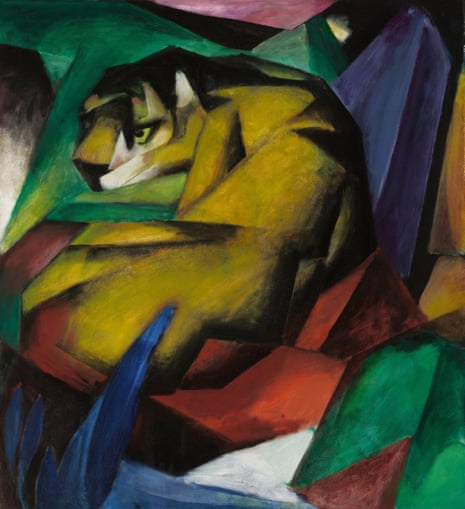Is there such a thing as “good” or “bad” art? Ultimately, isn’t it in the eye of the beholder? Karen Halliday, Dublin
Send new questions to nq@theguardian.com.
Readers reply
What keeps bugging me is why the value of a painting, or an artwork in general, is decided by the signature at the bottom, rather than by what it expresses. eveline2
Paul Klee said: “Art does not reproduce the visible; rather, it makes visible.” To me, this means that good art is a gateway to seeing something new in the world. In your case, does a painting or drawing make you see, understand and indeed – and perhaps particularly – feel, in a new and different way?
Of course, some people will place a lot of emphasis upon technique, good drawing skills, attention to light, structure and the capturing of character. Then again, others will say that good art does not have to rely on any of these things and point to a lot of conceptual work.
At the National Portrait Gallery in London recently, I was struck in the “modern” section – with images of pop stars and others famous folks – by how little the photographs seemed to convey when placed alongside paintings. There are many iconic photographs I love, but it was only in the NPG that I felt that good art needs to offer something novel to the imagination.
To take another example, it is hard to find artists capable of getting to the heart of what it means to be an animal. Most paintings are twee, or strongly photographic, or stereotypical. In my view, Franz Marc, working more than 100 years ago, was one of the few artists able to get at the soul of a wild thing. SheerContent
There’s an old definition that I find helpful: great art transcends its material. It works for me because it’s not particularly culture- or medium-specific. TheFrugalGourmet
I don’t think effort or aesthetics determine whether an artwork is good or bad; more than anything, it has to have something interesting to say, or a particular phenomenological charge, an emotional and sensory experience it is trying to evoke.
If there is bad art, then it is art that is superficially beautiful, but ultimately says nothing about the world, or art that is ugly, but has pretensions of saying something deeper than it really does. rollerska8er
Ask any artist what they are trying to do by altering, editing, rewriting and so on and they will say, in one way or another, that they are trying to make it better. If there is no such thing as good art, they are just making a ridiculous fuss. Anyway, like lots of questions, it’s more interesting to ask why it arises than to answer it. I think it stems from confusion about something very basic – the difference between the pleasure taken in art, which is a subjective reaction, and the worth of the art as art, which is closer to objective (although not purely so).
after newsletter promotion
Simply put, you can like bad art. The tension in doing so is social and has nothing to do with aesthetics. You can also dislike good art. Again, that’s fine. But you can’t say a work of art is bad because you dislike it – that would be hubris. And you can’t say someone has to like good art – that would be snobbery. The trouble is that a lot of people do both of these things a great deal. It’s an instinctive reaction.
The best state to be in is to be curious about art, which includes being curious about why some is called good and some isn’t. There is a lot of room for negotiation, although not the infinite relativism of: “I liked it!” “Really? I hated it!” Be patient, open-minded and prepared for a bit of a slog. What you don’t immediately like you might eventually adore. If you develop even a little tolerance for difficulty, the rewards are tremendous. sherpa_10
I think it’s inarguable that there is better and worse art. For instance, The Night Watch and Guernica are better paintings than, say, that watercolour you did in school. 2001: A Space Odyssey is a better film than Star Wars: Episode I – The Phantom Menace. Sgt Pepper’s Lonely Hearts Club Band is a better album than Please Please Me.
Anyone who doesn’t agree with that simply doesn’t understand the features of that genre of art that make something good or bad. And if art pieces can be better or worse, then it suggests that there is a point where something becomes good and something else becomes bad. A bad piece of art may be enjoyable despite that. Conversely, you may not enjoy or appreciate a good piece of art. But they are still bad and good art nonetheless. superspartan
First, we must define art. In the real world, that is whatever an artist can sell as art. As for good and bad, it’s all subjective. Bad art does not equate to unskilled or poorly executed; I would not hang Goya’s Saturn Devouring His Son on my wall, but I recognise the skill in his work. D4v304K35
